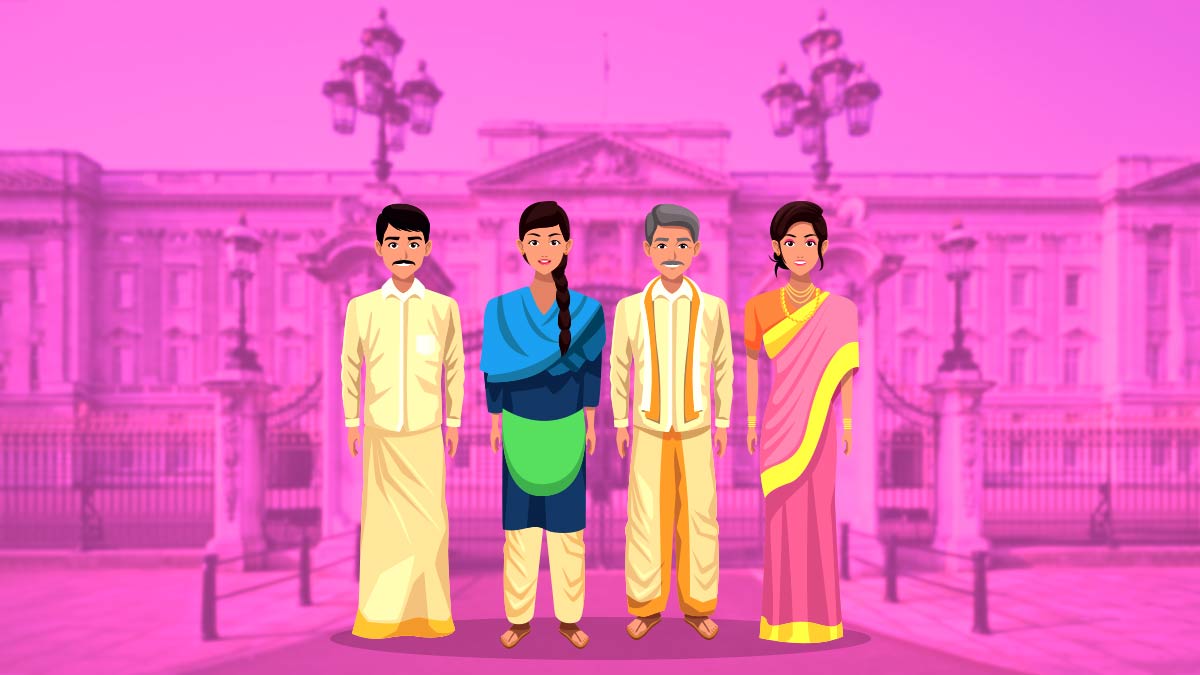
A few days back, Delhi University announced that students and teachers would have to ditch Western clothes in their convocation ceremonies and wear angavastram. Vikas Gupta, Registrar of DU, told The Indian Express, “We have made this change to promote Indian culture. It has been so many years, it is time to change now.”
Angavastram is a loose garment that Indian men used to pair with matching bottoms, usually dhotis. They used to cover their shoulders with a cloth piece.
However, DU is not the first university that aims to decolonise fashion as we know it today. In 2019, the National Institute of Fashion Technology in Rae Bareli asked students to arrive in traditional wear.
In 2018, the office of the Governor of Bihar issued norms under which students had to either wear kurta-pyjama or salwar-kameez as a replacement for the black gown.
For aeons, society has been regulating women by telling them what to wear and what not to wear. Even in 2023, Indian universities are asking students (men and women) to appear in traditional attire as a move towards decolonisation.
We spoke to Dr Mani Gupta, PhD Scholar of History, to understand the authentic traditional attire that we speak of with pride.

In the ancient period, Indians knew weaving and hand stitching but not as we know it today. We were introduced to it by the Mughals. Although, India remained to be the major exporter of muslin clothes.
While most of our ancient knowledge has been lost, what little we know, people around that time did not have a concept of concealment clothing. In fact, they only believed in covering the private parts of their bodies.
Old scriptures point out that saree as we know and drape today had a whole different version in ancient India. Around that time, men and women wore dhotis. The styling for both genders was different across the country and it had different names as well, but it offered flexibility to move legs freely.
At the time there was no concept of a blouse either. Women used to drape a piece of cloth around their chests and teamed it with a veil to cover their heads. In fact, in many parts, women did not have anything on their chests.

The draping style was such that it covered their bosoms. In many parts of India, including West Bengal, women still opt out of wearing blouses. But it is their choice. Similarly, in Maharashtra, many women drape a saree (Aditi Rao's saree collection) like a dhoti around their legs and take the remaining part to fall off their shoulders. Some prefer this style during weddings and special occasions.
On the other hand, men preferred to remain bare chested and had a khali or dupatta to cover some parts of their abdomen. During winter, they used to cover themselves with shawls. In many parts of North and South India, men still wear dhoti or lungi. But now they have a choice to wear jeans, pants and other kinds of bottoms, depending on what they have to do and where they have to go.
Wouldn’t it be a great idea to touch base with our roots and allow students to wear ‘traditional’ garments?
Don't Miss: All About Athiya Shetty’s Muhuratham Kanjivaram Saree

When the Mughals invaded, the condition of a certain section of women started deteriorating, which led people to opt for a clothing style that covered most parts of their bodies. We learnt to stitch salwar-kameez, and men started wearing pathani salwar.
However, it was Britishers who introduced leather shoes, pants, coats, sweaters, boots and shirts. In some places, women started pairing their sarees with shirts, footwear, bags and whatnot. So when we speak of going back to our roots should we forgo all this and get back to the ancient style of clothing that allowed for a decent show of skin? It seems more like an approach from a patriarchal perspective where we see certain clothes ‘against’ our culture.
However, if we revisit the pages of history, it seems people back in the days preferred comfortable clothing and understood the needs of both genders to perform day-to-day tasks without restrictive movements.

Don't Miss: History Of Saree - Get Acquainted With The Story Of Nine-Yard Elegance
Without going into the “colonialism: good or bad” arguments, the fact remains that today, India depicts unity in diversity. Modern India is an amalgamation of remains of ancient knowledge, Mughal cuisine and etiquettes from the mediaeval period and fashion (cowgirl fashion), technology, education from Britishers, and globalisation.
After decades of independence, we cannot get up one day and begin erasing impressions of our history like it never happened. It stands as a part of us in fashion, architecture, lifestyle, food, transport and education. We have to move forward with the shreds of legacies left from each period and make-do the best we have available today.
It is high time that we stop putting in efforts to erase history and educate youth in-depth about the past so that future generations can have the best of all worlds.
Also watch this video
Herzindagi video
Our aim is to provide accurate, safe and expert verified information through our articles and social media handles. The remedies, advice and tips mentioned here are for general information only. Please consult your expert before trying any kind of health, beauty, life hacks or astrology related tips. For any feedback or complaint, contact us at compliant_gro@jagrannewmedia.com.